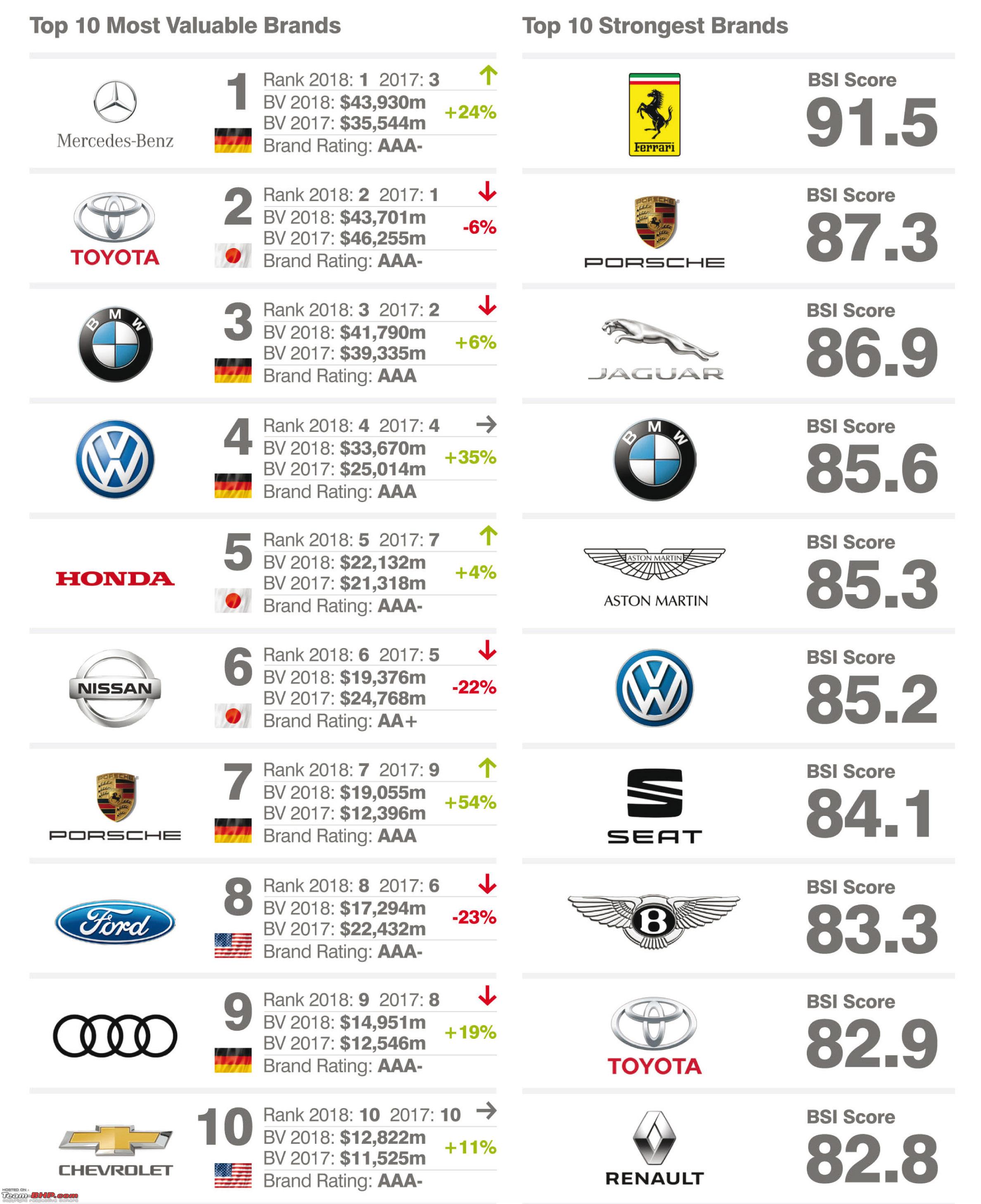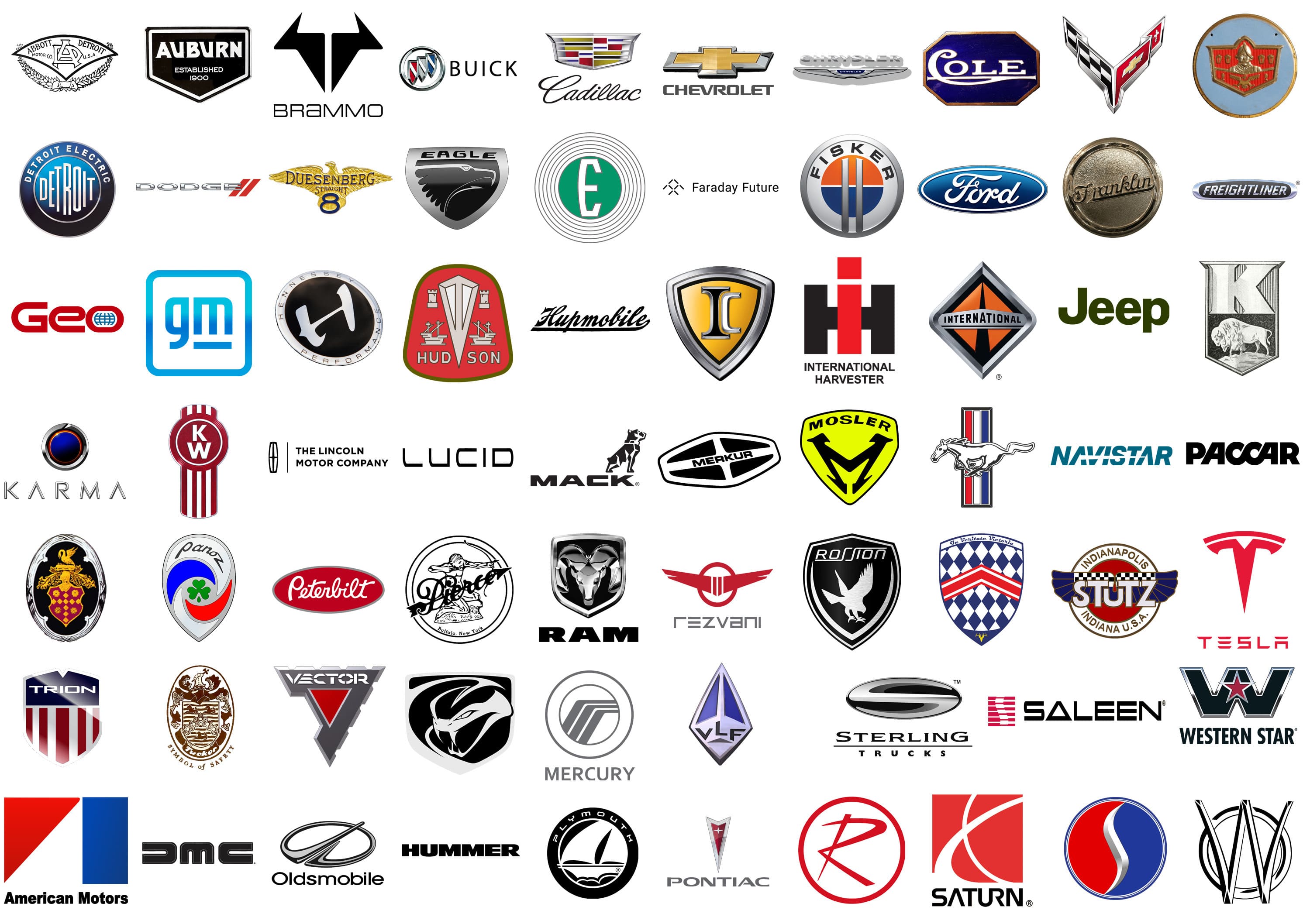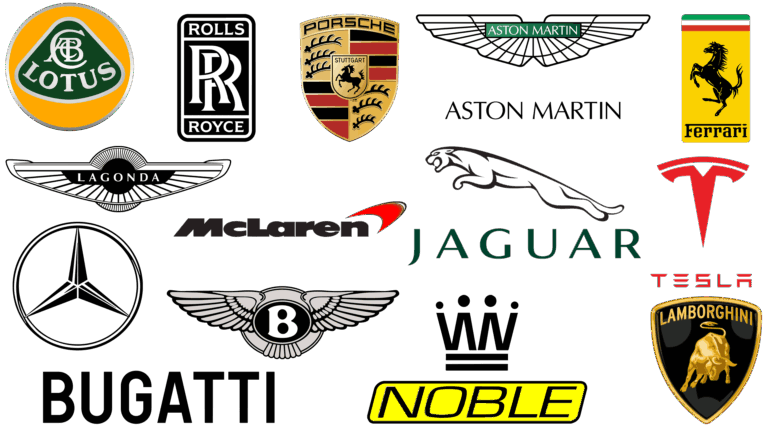What Is The Most Popular Car Brand? Unraveling the Automotive Crown
What Is The Most Popular Car Brand? Unraveling the Automotive Crown cars.truckstrend.com
The question "What is the most popular car brand?" seems straightforward, yet its answer is anything but simple. It’s a question that stirs debate among enthusiasts, fuels marketing campaigns, and reflects the ever-evolving landscape of global consumer preferences. Is popularity measured by sheer sales volume, the highest brand valuation, unwavering customer loyalty, or a combination of these factors? This comprehensive article delves into the multifaceted nature of automotive popularity, exploring the metrics, the contenders, the driving forces, and the dynamic trends shaping the industry’s most coveted title.
Defining "Popularity": More Than Just Sales Figures
What Is The Most Popular Car Brand? Unraveling the Automotive Crown
To truly understand what makes a car brand "popular," we must look beyond a single metric. While sales figures often grab headlines, they tell only part of the story. Here’s a breakdown of the various dimensions of popularity:
- Global Sales Volume: This is arguably the most common and quantifiable metric. It refers to the total number of vehicles sold worldwide by a brand or automotive group within a specific period (e.g., annually). Brands like Toyota and Volkswagen Group consistently vie for the top spot here, demonstrating massive production capabilities and broad market reach.
- Brand Value and Financial Strength: This metric assesses the financial worth of the brand itself, often calculated by consulting firms like Interbrand or Forbes. It considers factors such as brand recognition, customer perception, market leadership, and future earnings potential. Luxury brands, despite lower sales volumes, often rank highly in brand value due to their premium pricing and strong equity.
- Customer Loyalty and Satisfaction: This speaks to repeat purchases, positive word-of-mouth, and high scores in customer satisfaction surveys (e.g., JD Power). A brand might not sell the most cars, but if its existing customers are exceptionally loyal and satisfied, it indicates deep-seated popularity and trust.
- Market Share: This represents a brand’s percentage of the total vehicles sold within a specific market or segment. High market share signifies strong competitive performance and consumer preference in that particular area.
- Online Engagement and Cultural Impact: In the digital age, a brand’s presence on social media, search engine trends, and its ability to generate buzz contribute significantly to its perceived popularity. Brands that spark conversations and capture the zeitgeist often hold a special place in the public consciousness, even if their sales aren’t top-tier.
- Innovation and Thought Leadership: Brands that consistently push technological boundaries, introduce groundbreaking features, or lead the charge in new segments (like electric vehicles) often gain significant popularity for their visionary approach.

Ultimately, the "most popular" brand is a mosaic of these elements, shifting and evolving with market dynamics and consumer values.
The Contenders: Who’s in the Race for the Crown?
While no single brand definitively holds the title across all metrics, a few stand out as consistent leaders in various aspects of popularity:
- Toyota: For many years, Toyota, alongside its luxury division Lexus, has been the undisputed champion in global sales volume. Its reputation for unparalleled reliability, durability, fuel efficiency, and strong resale value makes it a go-to choice for millions worldwide. Its early adoption and continuous refinement of hybrid technology have also solidified its position.
- Volkswagen Group: This German automotive giant, encompassing brands like Volkswagen, Audi, Porsche, Skoda, SEAT, and Lamborghini, consistently rivals Toyota for the top global sales spot. Its strength lies in its diverse portfolio, catering to various market segments from economy cars to ultra-luxury vehicles, and its strong presence in key markets like Europe and China.
- Hyundai-Kia: The South Korean automotive conglomerate has experienced phenomenal growth in recent decades, becoming a significant player in global sales and market share. Known for offering excellent value for money, stylish designs, strong warranties, and rapidly advancing technology (especially in EVs), they have successfully shed their budget-brand image.
- Mercedes-Benz & BMW: These German luxury titans consistently rank among the highest in brand value and prestige. While their sales volumes are significantly lower than mass-market brands, their appeal lies in premium quality, cutting-edge technology, sophisticated design, and a strong emphasis on driving performance and comfort. They symbolize success and aspirational living.
- Tesla: A disruptor in every sense, Tesla has redefined the automotive landscape and is the undisputed leader in electric vehicle (EV) sales and innovation. Its immense brand hype, focus on software-defined vehicles, direct-to-consumer sales model, and rapid acceleration have made it incredibly popular, especially among tech-savvy consumers, despite its relatively young age.
- Ford & General Motors (GM): These American giants maintain strong popularity, particularly in North America, with their dominance in pickup trucks (Ford F-Series being a perennial best-seller) and SUVs. They boast a rich heritage, extensive dealer networks, and are making significant investments in their EV futures.


Factors Driving Brand Popularity
What propels a brand to the top of the popularity charts? A combination of strategic decisions and market forces:
- Reliability and Durability: A car that consistently performs without major issues is a powerful selling point. Brands like Toyota and Honda have built their reputations on this foundation.
- Innovation and Technology: From advanced infotainment systems to sophisticated safety features and autonomous driving capabilities, technological leadership attracts modern consumers. Tesla is a prime example of a brand leveraging innovation for popularity.
- Design and Aesthetics: A vehicle’s visual appeal plays a crucial role. Brands that consistently produce attractive, desirable designs (e.g., Mazda, Hyundai, luxury brands) capture attention.
- Value for Money: Offering a compelling package of features, quality, and performance at a competitive price point resonates with mass-market buyers. Hyundai and Kia have excelled here.
- Marketing and Brand Storytelling: Effective advertising, sponsorship, and creating a compelling narrative around the brand can forge an emotional connection with consumers.
- Dealer Network and After-Sales Service: A widespread, competent dealer network and excellent post-purchase support significantly enhance the customer experience and foster loyalty.
- Sustainability and Environmental Image: As environmental consciousness grows, brands that invest in sustainable practices and offer eco-friendly vehicles gain favor with a segment of consumers.
- Safety Features: A non-negotiable for most buyers, a strong safety record and advanced safety technologies are paramount to a brand’s reputation.
The Dynamic Nature of Popularity: Trends and Challenges
The automotive industry is in a state of rapid transformation, constantly reshaping the popularity landscape:
- The Electric Vehicle Revolution: The accelerating shift towards EVs is a major disruptor. Traditional ICE (Internal Combustion Engine) leaders are scrambling to catch up with EV specialists like Tesla and BYD. Brands that fail to innovate in this space risk losing significant ground.
- Supply Chain Resilience: Global events like the semiconductor shortage have highlighted the fragility of supply chains, impacting production and sales. Brands with robust and adaptable supply networks are better positioned.
- Economic Volatility: Inflation, interest rates, and consumer confidence directly impact car sales. Brands that offer flexible financing options or a range of price points can better navigate economic downturns.
- Emergence of Chinese Brands: Manufacturers like BYD, Geely, and SAIC are rapidly expanding beyond China, offering competitive EVs and increasingly sophisticated designs, posing a growing challenge to established global players.
- Connectivity and Software: Cars are becoming increasingly connected, resembling "smartphones on wheels." Brands that excel in over-the-air updates, seamless connectivity, and intuitive user interfaces will attract tech-savvy buyers.
- Personalization: Consumers increasingly desire vehicles that reflect their individual style and needs. Brands offering extensive customization options or subscription-based features may gain an edge.
Brands that can adapt quickly to these trends, invest strategically, and understand evolving consumer desires are most likely to maintain or gain popularity in the coming years.
How to Determine "Popularity" for Your Needs: Practical Advice
If you’re a consumer trying to decide on a car, or an industry observer seeking to understand market dynamics, here’s how to approach the concept of "popularity":
-
For the Car Buyer:
- Define Your Priorities: Are you looking for ultimate reliability, cutting-edge technology, luxury, affordability, or eco-friendliness? The "most popular" brand for a family on a budget might be very different from that for a tech enthusiast.
- Research Specific Metrics: Look at sales data for your region, read consumer satisfaction reports (e.g., JD Power’s dependability studies), and check brand value rankings.
- Consider Resale Value: Popular brands often hold their value better over time.
- Test Drive and Experience: Ultimately, the best way to gauge popularity for you is to experience the vehicles from different leading brands firsthand.
- Read Reviews and Forums: See what real owners are saying about their experiences.
-
For the Industry Observer/Analyst:
- Track Multiple Data Points: Don’t rely on just one metric. Combine global sales figures, regional market shares, brand valuation reports, and customer loyalty scores.
- Analyze Trends: Look for shifts in consumer behavior, technological advancements, and geopolitical impacts that could affect brand popularity.
- Monitor Emerging Markets and Brands: Keep an eye on regions like China and India, and new brands (especially EV startups) that could disrupt the established order.
- Understand Regional Nuances: A brand popular in one country might be virtually unknown in another.
Brand Popularity and Market Value Overview
This table provides a snapshot of some of the world’s leading car brands based on various indicators of popularity. Please note that figures are approximate and can fluctuate annually based on market conditions and reporting methodologies.
| Car Brand | Primary Metric for Popularity | Key Strength/Reason for Popularity | Typical Vehicle Price Range (USD) | Global Sales Volume (Approx. Annual) | Estimated Brand Value (2023/24, Billions USD) |
|---|---|---|---|---|---|
| Toyota | Global Sales Leader, Reliability | Unmatched reliability, hybrid tech, strong resale | $22,000 – $60,000+ | ~10-11 Million Units | ~$60-70 Billion |
| Volkswagen | European Market Leader, Diverse Portfolio | German engineering, quality, wide model range | $25,000 – $90,000+ | ~8-9 Million Units | ~$40-50 Billion |
| Hyundai-Kia | Rapid Growth, Value, Design | Value-for-money, modern design, strong warranty | $20,000 – $70,000+ | ~7-8 Million Units | ~$20-30 Billion (combined) |
| Mercedes-Benz | Luxury Segment Leader, Innovation | Premium quality, luxury, advanced technology | $45,000 – $200,000+ | ~2-2.5 Million Units | ~$60-70 Billion |
| BMW | Luxury Performance Leader, Driving Dynamics | Sporty driving, premium feel, strong brand image | $40,000 – $150,000+ | ~2-2.5 Million Units | ~$50-60 Billion |
| Tesla | EV Market Leader, Innovation | Cutting-edge EV tech, software, brand hype | $40,000 – $100,000+ | ~1.8-2 Million Units | ~$50-60 Billion |
| Ford | North American Stronghold, Trucks | Dominance in trucks/SUVs, iconic models, heritage | $25,000 – $80,000+ | ~4-4.5 Million Units | ~$20-30 Billion |
Note: "Typical Vehicle Price Range" refers to the Manufacturer’s Suggested Retail Price (MSRP) for new vehicles across the brand’s diverse model lineup, from entry-level to higher-end variants. Global Sales Volume figures are approximate annual sales based on recent reports. Estimated Brand Value figures are based on various brand ranking reports (e.g., Interbrand, Forbes) and are subject to change.
Frequently Asked Questions (FAQ)
Q: Is "most popular" always the best quality?
A: Not necessarily. While popular brands often achieve their status through consistent quality and reliability, "best quality" can be subjective and depend on specific criteria (e.g., luxury materials vs. long-term durability). A brand’s popularity is a blend of many factors, not just perceived quality.
Q: Does popularity mean high resale value?
A: Generally, yes. Brands with high popularity, particularly those known for reliability and demand, tend to have better resale values. Toyota and Honda are prime examples of this.
Q: How do electric vehicles (EVs) affect brand popularity rankings?
A: EVs are significantly reshaping rankings. Brands that quickly adapt and produce desirable EVs (like Tesla) are seeing a surge in popularity and market value, while traditional brands that lag risk losing ground. EV leadership is becoming a crucial factor in future popularity.
Q: Which car brand has the highest customer satisfaction?
A: Customer satisfaction can vary by region and over time. Brands like Lexus (Toyota’s luxury arm) and Porsche frequently rank very highly in customer satisfaction and dependability studies (e.g., by J.D. Power) due to their focus on quality, service, and owner experience.
Q: Will Chinese car brands become the most popular globally?
A: Chinese car brands like BYD and Geely are rapidly expanding and improving in quality, technology, and design, especially in the EV segment. While they are already very popular within China, becoming globally "most popular" will depend on their ability to build trust, establish extensive dealer networks, and adapt to diverse international consumer preferences. They are definitely strong contenders for future growth in popularity.
Conclusion
The quest to identify "the most popular car brand" reveals a dynamic and complex automotive world. While Toyota often holds the crown for sheer sales volume, true popularity is a multifaceted gem, reflecting brand value, customer loyalty, innovation, and cultural impact. The landscape is constantly shifting, driven by technological advancements, economic forces, and evolving consumer desires, particularly the accelerating transition to electric vehicles.
Ultimately, the "most popular" car brand isn’t a fixed title but a fluid concept, shaped by the lens through which it’s viewed. For consumers, the most popular brand is the one that best meets their individual needs and aspirations, while for the industry, it’s a testament to adaptability, strategic vision, and an unwavering connection with the global automotive market. The race for popularity continues, promising exciting innovations and shifts in the years to come.






